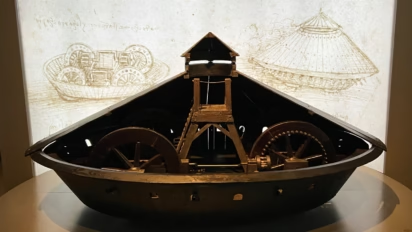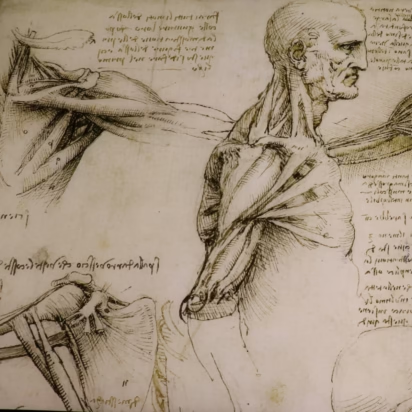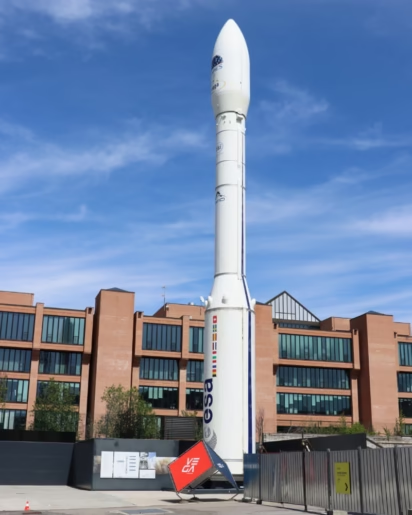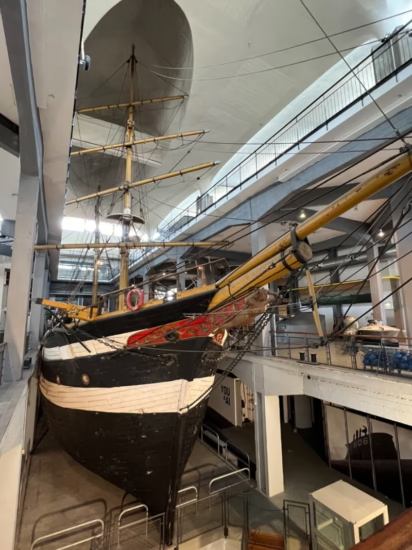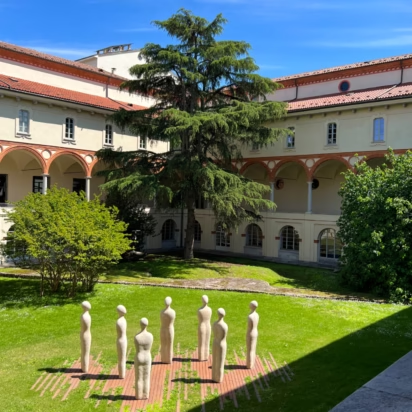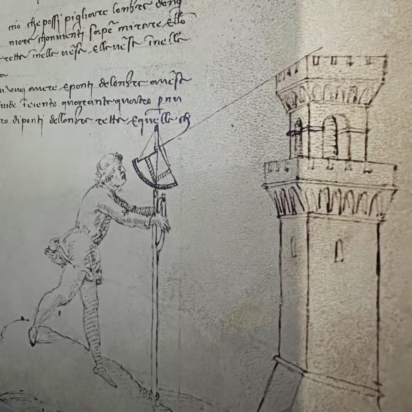The National Museum of Science and Technology Leonardo da Vinci (Museo nazionale della scienza e della tecnologia) in Milan is the largest technology museum in Italy and is famous for its large collection of working models and designs by Da Vinci.

Seeing the largest permanent display of the models and designs of Leonardo da Vinci in the world is a highlight of any visit to the National Museum of Science and Technology in Milan. However, this large museum offers much more with permanent exhibitions covering a wide spectrum of topics from space travel to food science. Buy museum tickets online with handy skip-the-line time-slot reservations. For a less academic approach, visit the Leonardo3 exhibition near the Duomo and La Scala — here around 200 large working models and interactive displays are easy to enjoy by visitors of all ages.
National Museum of Science and Technology Leonardo da Vinci in Milan
The National Museum of Science and Technology Leonardo da Vinci (Museo nazionale della scienza e della tecnologia) in Milan is the largest technology museum in Italy and one of the most important in Europe. It is a physically large museum with exhibitions covering a very wide field.
For many visitors, the main reason to visit is to see the models and designs in the Leonardo da Vinci Galleries. Although these are undoubtedly the highlights, many will also enjoy some of the other displays.
The permanent exhibitions in the museum in Milan cover the following main themes:
- Art & Science — Leonardo exhibitions, musical instruments, art collection
- Communication — telecommunications, space
- Food Science
- Materials — various metals, minerals, chemicals & industrial production, fashion
- Energy — electricity, energy sources, systems
- Transportation — rail, boats, planes
Further temporary exhibitions and hands-on labs are also available. Some experiences need to be booked in advance and are offered in Italian only.
Visiting the Museum of Science and Technology in Milan

It is worth studying a map of the Museum of Science and Technology Leonardo da Vinci in Milan before visiting, as the museum is physically large and spread through several buildings. Maps and suggested highlight routes are available online or use QR codes at the museum entrance to download maps.
The main building is on three levels with the Da Vinci Galleries on the top floor. From the main building, visitors are guided to the museum exit via the rail building (one level), the outdoor spaces, and the air & water building (three levels).
Handily, the museum currently has a suggested route clearly mapped out. For many, the shorter route may be the most interesting. If visiting early in the morning (or any quiet time), head up to the top floor first to see the popular Leonardo da Vinci galleries, space, and communication exhibitions.
Expect to spend at least two hours in the museum (if seeing only the highlights) and four hours or even more to visit all the exhibitions.
Leonardo da Vinci Galleries

The Leonardo da Vinci Galleries are for many the highlight of a visit to the National Museum of Science and Technology named after the great inventor. The exhibition includes drawings, working models, a wealth of information, and audiovisual displays. All items here are well described in Italian and English.
The exhibition focuses on the work and life of Leonardo da Vinci (1452-1519) not only as an artist and engineer but also as a humanist, an investigator of nature, and his keen interest in everything from human biology to industrial processes and the cosmos.
His war machines and attempts at flight are always popular. However, he did so much more practical too. He planned civil engineering projects to improve the distribution of water, he suggested better town planning and his interest in architecture covered both military and civilian buildings. He also made many proposals for better industrial machinery and equipment to hoist building materials or raise columns.
Many copies of his drawings and graphics are on display — as accurate historical copies, reproductions, or on large digital screens. Some graphics are purely fine art or studies for larger artworks while others are designs for machines, architecture, city planning, engineering projects, or simply doodles and sideline drawings.
Although it claims to be the largest permanent exhibition on Da Vinci, it should be noted that no original art or designs of Leonardo are on display here. The only original Leonardo da Vinci works in Milan are The Last Supper as well as the musician painting and the Codex Atlanticus graphics in the Pinacoteca Ambrosiana.
Guided tours in English of the Leonard da Vinci Galleries are available many weekends. Book in advance — as the tours are offered by the museum the mark-up is very reasonable.
For a less academic approach, visit the Leonardo3 exhibition near the Duomo and La Scala — here around 200 large working models and interactive displays are easy to enjoy by visitors of all ages.
Space and Telecommunications
After the Leonardo da Vinci Galleries, the space and telecommunication exhibitions are probably the most popular halls in the museum. These are also on the top floor of the main. building.
The main themes of the space galleries are observation from earth and space travel. Several large telescopes are on display including the Merz-Repsold telescope. Giovanni Schiaparelli’s observation of channel-like structures on Mars with this telescope in the 1880s led to the notion of Martians.
Several satellites and gear used in space travel are on display. A highlight is the fragment of moon rock — the only lunar object in Italy — collected in 1972 by Apollo 17. A collection of large satellite photos of fragile parts of the earth is also interesting to see.
The telecommunications exhibition is also very popular. Italians such as Marconi and Caselli and companies such as Olivetti played a major role in the development of telegraphy, telephones, radio, television, and digitalization. Some beautifully designed 20th-century equipment is also on display.
Other Exhibitions in the Main Building

The museum has a “20 highlights in 2 hours route” but it is worth also checking the map to see if other themes may be of more interest — some are easy to miss as they are not directly on the main route.
On the lower level of the main building are several specialized exhibitions covering mostly metals, materials, energy, production, and industrial processes. Exit to the adjacent building to see a smelting furnace and industrial plants. Visitors with limited time usually skip this floor altogether.
To reach the stairs leading to the highlights on the upper floor, visitors pass an old pharmacy, art displays, and an interesting exhibition on nutrition. Also, have a look at the cloisters and courtyards of the monastery that originally used the main building. On the way down from the top floor, it is possible to visit specialized exhibitions on particle physics and chemical manufacturing.
Rail Building

The rail transportation exhibition in a separate railway shed in a typical Liberty (art nouveau) style is not particularly big and easy to enjoy on the walk toward the exit.
Highlights include the first electric engine in Italy and several large steam locomotives. It is possible to board the tram and have a close-up look at some of the railway cars.
Outdoor Spaces

The main objects on display in the outdoor area are:
- Vega Space Launcher (2012) — a full-size model of the 30-m high space launcher designed by the Europan Space Agency to place satellites into different orbits.
- Submarine S 506 Enrico Toti (1967) — the first post-war submarine built in Italy. (Guided tours are sometimes offered on weekends — in Italian only, extra charge.)
Air & Water Building
The museum exit is via the Art and Water Building so all visitors have to pass through this large hall with several boats and aircraft on display. The major objects may be seen from the ground floor but it is worth going up to the higher level for a close-up look at some of the flying machines.
Highlights of the water transportation exhibition include:
- Ebe Schooner (1921) — originally used as a cargo ship in the Mediterranean it became a training ship until the museum cut it up in the 1960s and rebuilt it as one of the largest ships on display inside a museum building.
- Conte Biancamano Liner (1925) — the bridge, ballroom, and some cabins of this transatlantic ocean liner were rebuilt inside the museum.
- AC72 Luna Rossa Catamaran (2013) — used in the America’s Cup (with Prada sponsorship)

The air transportation section includes historical flight machines (or accurate copies) of hang gliders, helicopters, airplanes, and aeronautical engines. A few interesting displays include:
- Enrico Forlanini’s Experimental Helicopter (1877) — the first object ever to fly using the thrust of an engine. This pilotless “helicopter” rose 13 m and stayed in the air for 20 seconds using a light steam engine.
- Cierva C-30 Gyroplane (1934) — the first and most common gyroplane produced before the Second World War
- Macchi MC 205 V (1943) — the only airworthy of three survivors of the most important Italian fighter plane of the Second World War.
- Blériot XI (1909 – replica) — the plane model that famously crossed the English Channel in 1909 was also the first ever used in aerial warfare (Italy’s Libyan campaign (1911-12).
- Nieuport-Macchi Ni.10 (1915) — an original plane of the aircraft model first used by the French, Russian, English, Belgian, and Italian armies in the First World War.
Visitor Information: National Museum of Science and Technology in Milan

Tickets and Opening Hours
The opening hours of the National Museum of Science and Technology Leonardo da Vinci (Museo nazionale della scienza e della tecnologia) in Milan are usually:
- Tuesday to Friday: 9:30 to 17:00
- Saturday and Sunday: 9:30 to 18:30
From late June to early September (summer school holidays), the museum opens at 10:00 but closes at 18:00 (19:00 on weekends).
The last admissions are an hour before closing time.
The museum is often open on Monday if it is a public holiday.
Tickets for the National Museum of Science and Technology in Milan
Admission tickets for the National Museum of Science and Technology Leonardo da Vinci are €10 for adults and €7.50 for children 3 to 18. Youths 18 to 25 and seniors over 65 years usually also receive €7.50 admission tickets.
Buy tickets online with timeslot reservations to ensure quick admission even during periods. Guided tours of the Leonardo da Vinci Galleries are often available in English on weekends (with admission tickets allowing you to visit the rest of the museum after the tour).
Transportation to the Science and Technology Museum in Milan
Getting to the National Museum of Science and Technology Leonardo da Vinci (Museo nazionale della scienza e della tecnologia), Via San Vittore 21, 20123 Milano, Italy, is easy from most parts of Milan. The closest metro station is San Ambrogio station on metro line M2 (green) with a direct connection to Milano Centrale mainline station. (If on the red line / M1, change at Cadorna.)
From the Duomo area, an easy option is tram line 16 to stop Santa Maria delle Grazie (at the Last Supper Museum), which is a short walk from the Science and Technology Museum.
A visit to the National Museum of Science and Technology Leonardo da Vinci combines well with several other top sights in the immediate vicinity: seeing The Last Supper painting requires reservations (or book tours months in advance) but it is possible to simply stroll in without waiting (and for free) into the adjacent Santa Maria delle Grazie church, the Romanesque San Ambrosio basilica, and the magnificent Renaissance frescoes of San Maurizio (“Sistine Chapel of Milan”).
More Tips on Milan Sights and Tickets
- Top Leonardo da Vinci Sights and Art to See in Milan
- The Last Supper by Leonardo Da Vinci:
- How to Buy Tickets for the Last Supper,
- What to Expect when Visiting the Last Supper Museum,
- Tips on How to Buy Tickets or Book Tours for the Last Supper Museum — buy early or only guided tours are available,
- How to Get Free Tickets for The Last Supper and a step-by-step guide for booking free Sunday tickets,
- Booking Guided Tours of The Last Supper at GYG.
- Visit Chiesa di Santa Maria Delle Grazie — admission to the church next to The Last Supper Museum is free.
- Visit the Free San Maurizio Church — endless Renaissance frescoes in the “Sistine Chapel of Milan”
- Visit the Pinacoteca Ambrosiana to See Leonardo Da Vinci’s Musician Painting and the Codex Atlanticus.
- Visit the National Museum of Science and Technology Leonardo da Vinci
- Milan Duomo Complex:
- Cheapest Public Transportation to Milan Malpensa Airport (MXP).
- Book luggage storage in advance — close to transportation hubs is generally the better option.
- Book Last Supper Tours at Viator.
- Book Guided Tours for the Duomo, Last Supper, and other sights in Milano from Get Your Guide.
- Buy Admission Tickets for the Duomo and top sights in Milan from Tiqets.
- Buy Milan Guidebooks at Amazon.
